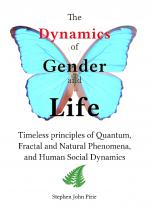[Excerpt Be and Become, © ProCreative, Sydney 2000]
The idea that we create our reality and that we are each part of some infinite “undivided whole” can seem so utterly divorced from our normal experiences of everyday life.
For many people the idea can seem entirely unreal, even absurd. For those who realize the consistency and validity of the ideas presented thus far, it is likely it all remains rather academic and hypothetical. There can seem such a large gap between our intellectual understanding that we “create our own reality” and actually moving mountains, so to speak. Hence my disclosures in Chapter Two, concerning how even though I may understand how I create my reality, experiencing effective manipulation, movement or creation of it is another matter altogether.
Our bodies for example seem to have their own agendas, which often seem to be unrelated or independent of our desires. According to a number of recent studies a majority of women in both Australia and the United States believe themselves to be overweight. Their overweight condition would seem to be attributable to factors beyond their conscious control, for if it were simply a matter of conscious control then women would not be choosing to be overweight.
As we age we seem to inevitably show signs of wear and tear by growing grey hair and wrinkles; we get slower and more restrained in our physical movements and so forth.
In a broader context, often during our modern busy work schedules and the increasingly hectic and complex world we live in, we can often feel so utterly separate and disconnected from things “out there.” Many, many times in recent years, as I would walk down a busy street, I would reflect on the applicability of the wave-particle model to everyday life. I would look upon the buildings, roads, pavement, motor vehicles and all manner of manufactured objects and think “how can the atoms and molecules in all this be somehow “pulsing On” to form the concrete, steel and plastics of our man-made world?” I pick up a cup and I feel its texture, its realness and reflect upon the simple objective nature of its existence—it seems to be simply a “thing,” an inanimate object devoid of any living qualities ... but according to quantum theory it’s “choosing” to be a cup.
At least the natural world of plants and animals has a readily identifiable “aliveness” which at least allows us to stretch our imaginations to recognize some form of lower order intelligence in operation. But it can be difficult to sense some form of elemental mind in rocks and other naturally “inanimate material” (as do native peoples).
And yet, the quantum theories in the previous chapter (together with the resolution to Zeno’s Paradoxes), present a viable foundation for understanding that we do indeed create our circumstances and that we are profoundly intertwined with everything that exists. The ideas do form a highly consistent basis by which to explain reality. And from my own limited experience, some of which was mentioned in Chapter Two, such ideas when applied to our intimate relationship with the animate and inanimate world around us do indeed yield results consistent with the ideas.
How then can we reconcile our obvious and profound sense of separation from the world around us, with the idea that we are in fact part of an “undivided whole?” How can we begin to accept that the atoms and molecules which compose the everyday objects in our reality, such as televisions, tables, chairs, books, computers, motor vehicles are all colluding to form the objects we so readily enjoy using or abusing?
How can we begin to delve into the unspeakable and unknowable profundity of the idea that the entire universe is somehow “self-aware,” somehow “alive”? That as I sit at my computer writing this book the computer is choosing to be a computer? That the chair upon which I sit is, thankfully, continuing to “choose” to be a chair? How can I stop from feeling overwhelmed by the enormity of this realization—how can I begin to accept its relevance in my life?
 "The Dynamics of Gender and Life" ebook is now available at
"The Dynamics of Gender and Life" ebook is now available at